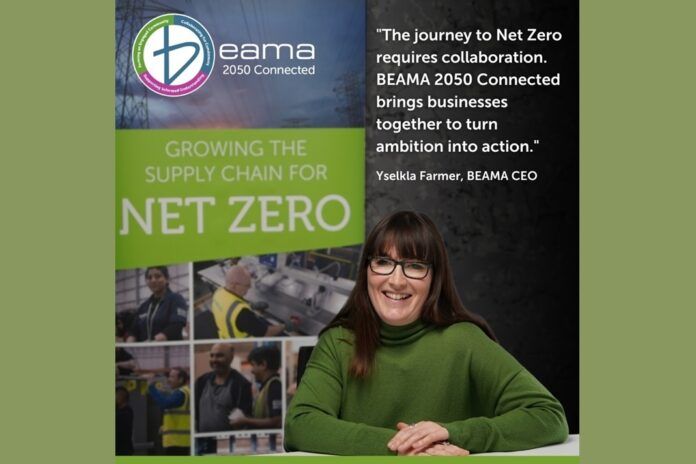
BEAMA has launched BEAMA 2050 Connected, a not-for-profit subscription service.
The association said that BEAMA 2050 Connected offers subscribers access to “essential resources, networking opportunities, and policy insights” to help navigate the complexities of decarbonisation and sustainability.
Yselkla Farmer, CEO of BEAMA, said: “Our markets are at a pivotal moment. Government leadership and effective collaboration with industry are essential to secure a sustainable, competitive supply chain for the future. We are pinned as one of the largest growth sectors for the UK as we decarbonise our energy system – we need to do this sustainably. BEAMA 2050 Connected provides the framework needed to navigate the challenges of decarbonisation and seize the opportunities it presents.”
Amy Collins, head of Net Zero and Clean Teach at BEAMA, added: “The launch of BEAMA 2050 Connected marks a significant step forward in our collective journey towards net zero and circularity. By bringing together key industry players and stakeholders, we are creating a unified platform that supports sustainable growth to fill in the gaps and inconsistencies we all see across the supply chain.”
Erika Wilson, managing director at Wilson Power Solutions, said: “BEAMA 2050 Connected (B2050C) will be the platform that offers a coherent approach to support business to deliver the right products at the right speed to enable the UK to achieve net zero and a circular economy. In order that we are prepared, we must scale up our operations in a controlled way.
“B2050C will guide and advise members of positive changes in policy, update on critical interactions and decision making with government so needed at this time. The realities of manufacturing and scaling up operations need to be shared with government so they can understand how shaping policy, and standards go hand in hand with the countries ambitions and its supply chain challenges.”
